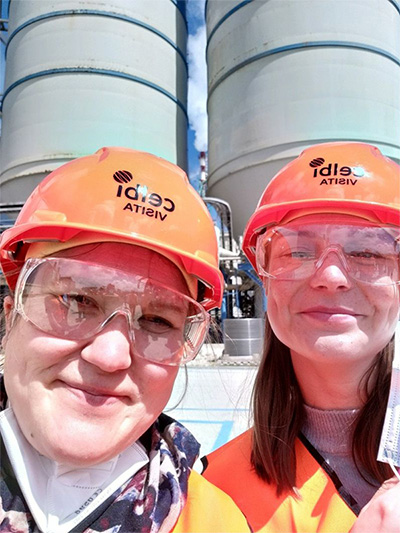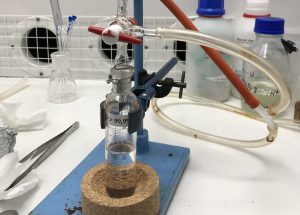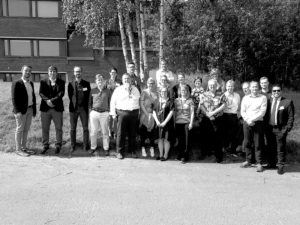
Jenni Rahikainen, Senior Scientist at the Technical Research Centre of Finland VTT, is leader of work package 2 (WP2) in the GRETE project, studying pre-treatments and modifications of the paper-grade pulps for cellulose fibre regeneration. Also within WP2, VTT’s Emmi Nuutinen has been responsible for the use of proteins to improve the properties of the GRETE fibres. In the following paragraphs Jenni Rahikainen shares a glimpse at the work of WP2, which delivers a couple of milestones for the GRETE project.
“The Work Package 2 focuses on the modification of paper-grade pulps to render them well suited for the preparation of textile fibres. In addition to good processability we also aim for improved properties that can expand the use of man-made cellulosic fibres. In GRETE we have harnessed both chemical and biological tools in use either to adjust the size of polymers in paper-grade pulps or to modify the chemistry of the polymers. My own role as a WP leader is backed up by my strong background in enzymatic modification of lignocellulose and pulp and my great VTT colleagues who master the chemical modifications of cellulose.
Dissolving grade pulp with reduced hemicellulose content is typically used for the production of man-made cellulosic fibres. In GRETE our challenge has been in broadening the raw material base to paper-grade pulps with high content (ca. 20 wt%) of hemicelluloses. This holds a sustainability aspect since a larger share of wood biomass will end-up in the long-lived textile products. The key innovation in GRETE is in the use of ionic liquids in pulp dissolution – a solvent system capable of handling with the high hemicellulose content. However, the ionic liquid alone can’t do the trick, but a pre-treatment is needed to adjust the pulp properties just right for spinning.
In GRETE we have explored enzymatic and chemical pre-treatments for eucalyptus and softwood kraft pulps and one key outcome of WP2 is in acknowledging the differences that arise from pre-treating completely different types of fibres. To date we have been able to design enzymatic and chemical pre-treatments for both kraft pulps that have resulted in good dope quality and successful spinning of regenerated fibres. We have also been able to generate chemical modifications to the kraft fibres that can withstand dissolution and regeneration in and ionic liquid, result in spinnable dopes and change the final properties of the regenerated fibres.
After three years of GRETE project most of the work of WP2 is done but the impact of our work starts to emerge when regenerated fibres with interesting properties are being spun. If you wish to learn more about the work carried out in WP2, please check out the excellent MSc thesis studies by Elisa Spönla and Simo Hannula.”
Intrigued by the results that GRETE is achieving? The MSc thesis studies by Elisa Spönla, showing the development of enzymatic pre-treatments, and by Simo Hannula, focusing on using the pre-treated pulps in fibre spinning, are available through the links. Also, subscribe now to our newsletter to keep updated about GRETE project progress.




